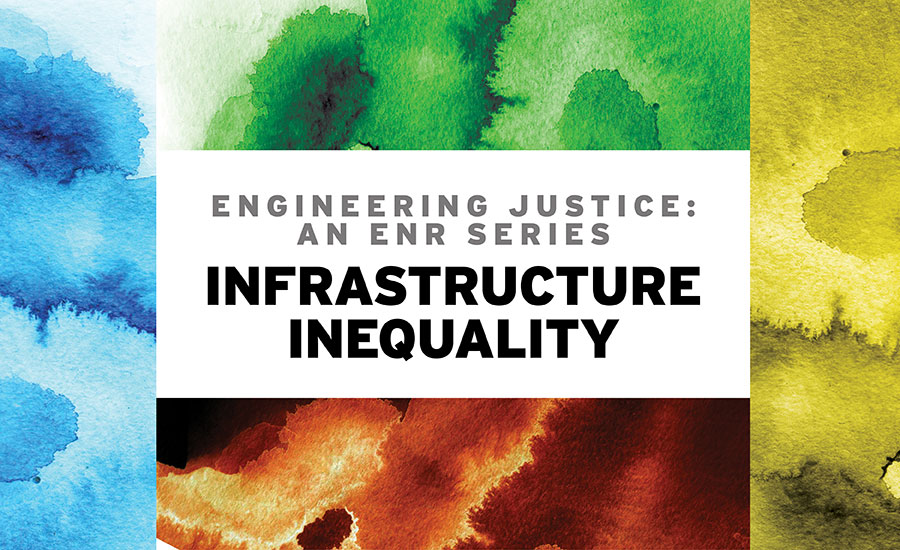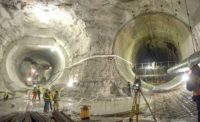Mustafa Santiago Ali remembers, as a young Black man at the U.S. Environmental Protection Agency, attending a meeting about environmental justice in Michigan with older white colleagues during the early days of the movement. “I remember them saying, ‘I don’t know why we’re going to this. You know these folks are making this stuff up,’ and those were people who had a responsibility for protecting people’s health,” he says,
The push for environmental justice has come a long way since those early days in the late 1980s and early 1990s to a point where the Biden administration now proposes to spend billions of dollars to ensure that low-income and minority populations have equitable access to reliable infrastructure, healthy environments and economic opportunity.
Click here to read other Engineering Justice series articles
Bringing Equity to Infrastructure Inequality
Room to Breathe: Industry and Stakeholders Seek to Co-Exist
A Jan. 27 executive order issued by President Joe Biden establishes the Justice40 initiative, which aims to deliver 40% of the benefits of climate-related federal investment to underserved communities. It makes the link between infrastructure, job creation and environmental justice clear, with investments that include clean transit, affordable and sustainable housing, legacy pollution cleanup and workforce training.
'Not Just a Goal'
“This is not just a goal,” said Diana Mendes, HNTB corporate president for infrastructure and mobility and equity, to a recent ENR conference audience. “The government will track it ... with impacts on funding, project priority and decision making.” The intention is to have environmental justice as part of every federal decision, from contracting to procurement, adds Matthew Tejada, director of EPA’s Office of Environmental Justice.
President Biden’s request for fiscal 2022 discretionary funding proposes a $1.4 billion investment in marginalized and overburdened communities that includes $936 million for the administration's new Accelerating Environmental and Economic Justice Initiative that the EPA will manage, with Administrator Michael Regan telling a Senate Appropriations subcommittee on June 9 that the effort “underpins all of our work.” It is set to include about $100 million for a new community air quality monitoring and notification program that "would provide real-time data in the places with the highest levels of exposure to pollution," said EPA.
The discretionary request also seeks $6.5 billion in lending to support clean energy, energy storage, and transmission projects in rural communities, that would include communities of color. In addition, it proposes $450 million for tribal-focused climate mitigation, resilience, adaptation, and environmental justice projects and $5 million for US Justice Dept. Environment and Natural Resources Division enforcement.
Built in Racism?
While inequities exist in all infrastructure sectors—from highway alignments to wastewater treatment plant locations—finding solutions won’t be easy or without controversy. U.S. Transportation Secretary Pete Buttigieg was praised and panned this spring when he stated there is “racism physically built into some of our highways.”
Some inequities still happen as lower income communities and those of color cope with not only disproportionately high pollution and climate change impacts and risks that can worsen when mitigation and adaptation measures are unevenly applied. Levees to prevent flooding from extreme weather events save some communities—often at the expense of nearby ones where flooding is exacerbated as a result.
In a new report in June 2021, the U.S. Public Interest Research Group and advocacy group Environment America say that 70% of federal Superfund cleanup sites are within one mile of public housing, in disproportionately low-income communities of color, with the U.S. Government Accountability Office noting in 2019 that 60% of those sites are in areas at risk of being impacted by flooding, storm surge, wildfires and sea-level rise.
A greenhouse gas emissions-reduction bill introduced in March by New Jersey Rep. Frank Pallone, House Energy and Committee Chairman, has an array of new environmental justice provisions, along with some funding outlined.
For public schools relying on public funding, environmental justice imbalance abounds. Typically, higher-income communities have the means to create and maintain healthier schools. The pandemic has “only served to further entrench those inequities in schools along racial and socioeconomic lines,” says a recent report from the U.S. Green Building Council.
States and cities, long on the front lines of the disparity, are already moving ahead to give more enforcement bite to environmental justice mandates.
Overburdened Communities
New Jersey's environmental justice law passed in September 2020 is seen as the most progressive in the U.S., focused on how or whether certain pollution-emitting facilities are built in “overburdened communities,’’ based on cumulative impact assessments and stricter permit reviews. The state now “is empowered to deny new sources of pollution in these communities, or require added pollution reduction measures from existing sources,” says Jonathan Smith, Earthjustice senior attorney.
NJ initially identified 310 target communities in municipalities, including those with higher rates of asthma and cancer illnesses and deaths..
Shawn LaTourette, deputy commissioner of the state Dept. of Environmental Protection, said in an issue-focused panel discussion last year that “our environmental laws, as they exist, do not look at the very finite condition of a host community. This law asks us to zoom out and take a look at the broader picture.”
Implementing regulations have yet to be issued amid still ongoing stakeholder interactions, but business interests are concerned about impacts to future urban investment and economic recovery. Ray Cantor, government affairs vice president of the New Jersey Business and Industry Association, says that if the law “is not implemented in the right way, it could kill off certain businesses right away.”
'Country is Watching'
Even so, more states—including Washington, Illinois, New York and California—are creating or augmenting environmental justice protections through new and pending laws and executive orders.
Ali, now working for the National Wildlife Foundation after 24 years at EPA, notes a need for accountability from governments to ensure environmental justice funding goes to the right places. He says he’d like to see boosted STEM training at all levels of education to get the “next set of engineers and scientists in place to deal with environmental injustices.”
Read the first article in ENR's environmental justice series:
"The timing is critical because the whole country is watching," says Maria Lopez-Nuñez, deputy director for organizing and advocacy of that Newark, N.J.;s Ironbound Community Corp. “This is about justice for Black, brown, indigenous folks, low-income folks in Appalachia, and others elsewhere.”










Post a comment to this article
Report Abusive Comment